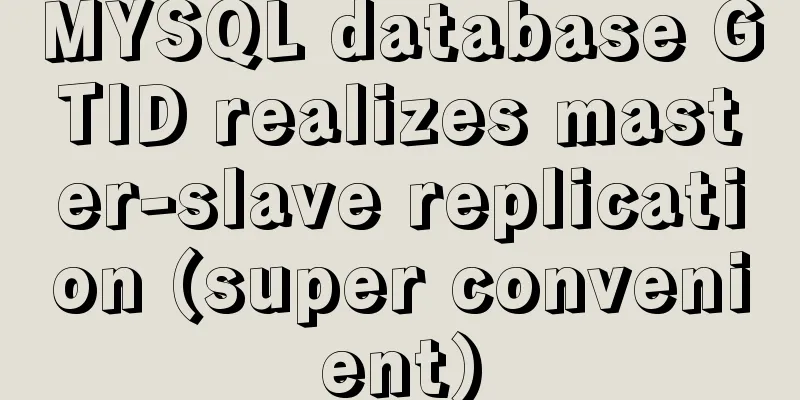Description of the default transaction isolation level of mysql and oracle

1. Transaction characteristics (ACID)(1) Atomicity. The database modification operations performed by the programs involved in the transaction either all succeed or all fail. (2) Consistency The source and destination are balanced before and after the transaction is executed. (3) Isolation During concurrency, each transaction is isolated and does not affect each other. (4) Durability Once a transaction is successfully committed, the integrity of the data should be guaranteed. 2. Transaction Isolation Level(1) read uncommitted All transactions can see the data of uncommitted transactions. (2) read committed The transaction can only be queried after it is successfully submitted. (3) Repeatable When multiple instances of the same transaction read data, uncommitted records may be queried, resulting in phantom reads. mysql default level (4) Serializable Force sorting and add shared locks on each read data row. This will result in a lot of timeouts and lock contention.
MySQLThe default transaction level of MySQL is 'REPEATABLE-READ', which means repeatable read 1. View the current session isolation level select @@tx_isolation; 2. View the current isolation level of the system select @@global.tx_isolation; 3. Set the current session isolation level set session transaction isolatin level repeatable read; 4. Set the current isolation level of the system set global transaction isolation level repeatable read; OracleOracle database supports two transaction isolation levels: READ COMMITTED and SERIALIZABLE. The default system transaction isolation level is READ COMMITTED, which means read committed 1. Check the system default transaction isolation level, which is also the current session isolation level --First create a transaction declare trans_id Varchar2(100); begin trans_id := dbms_transaction.local_transaction_id( TRUE ); end; -- Check the transaction isolation level
SELECT s.sid, s.serial#,
CASE BITAND(t.flag, POWER(2, 28))
WHEN 0 THEN 'READ COMMITTED'
ELSE 'SERIALIZABLE'
END AS isolation_level
FROM v$transaction t
JOIN v$session s ON t.addr = s.taddr AND s.sid = sys_context('USERENV', 'SID');
Supplement: SQLserver locks and transaction isolation levels Isolation Level
LockShared lock: For shared read (select), if there is a transaction (one or more) with a shared lock on the data in the table (the amount of locked data depends on the granularity of the lock), the locked data is not allowed to be updated (update) Exclusive lock: There can only be one, and other transactions cannot obtain shared locks and exclusive locks on the locked data (that is, exclusive locks are incompatible with shared locks. For more information, please see lock compatibility). Here we especially emphasize the locked data. Locks and Isolation LevelsType 1 ① READUNCOMMITTED: No lock is issued ② READCOMMITTED: Issue a shared lock and hold it until the reading is completed ③ REPEATABLEREAD: Issue a shared lock and hold it until the end of the transaction ④ SERIALIZABLE: Issues a shared lock and holds it until the end of the transaction Type 2 ① NOLOCK: No lock is issued. Equivalent to READUNCOMMITTED ② HOLDLOCK: Issue a shared lock and hold it until the end of the transaction. Equivalent to SERIALIZABLE ③ XLOCK: Issues an exclusive lock and holds it until the transaction ends. ④ UPDLOCK: Issues an update lock and holds it until the transaction ends. (Update lock: does not block other things, allowing other things to read data (that is, update lock is compatible with shared lock), but it ensures that the data has not been updated since the last time it was read) ⑤ READPAST: Issues a shared lock, but skips locking the row, it will not be blocked. Applicable conditions: Commit read isolation level, row-level lock, select statement. Type 3 ① ROWLOCK: row-level lock ② PAGLOCK: Page-level lock ③ TABLOCK: table lock ④ TABLOCKX: table exclusive lock Using XLOCK in a SELECT statement does not prevent reads. This is because SQL SERVER has a special optimization at the read committed isolation level, which checks whether the row has been modified and ignores XLOCK if it has not been modified. Because this is indeed acceptable in the Read Committed isolation level. The above is my personal experience. I hope it can give you a reference. I also hope that you will support 123WORDPRESS.COM. If there are any mistakes or incomplete considerations, please feel free to correct me. You may also be interested in:
|
<<: Vant uploader implements the drag-and-drop function for uploading pictures (set as cover)
>>: Tomcat uses thread pool to handle remote concurrent requests
Recommend
A complete list of frequently asked JavaScript questions for front-end interviews
Table of contents 1. Handwritten instanceof 2. Im...
Tutorial on installing and configuring Tomcat on Alibaba Cloud Server and adding external network access ports
Alibaba Cloud Server installs and configures Tomc...
Detailed explanation of the differences between var, let and const in JavaScript es6
First, a common question is, what is the relation...
Textarea tag in HTML
<textarea></textarea> is used to crea...
Solution to the problem that the docker container cannot be stopped
The solution is as follows: 1. Force delete conta...
Detailed example of using useState in react
useState useState adds some internal state to a c...
LINUX Checks whether the port is occupied
I have never been able to figure out whether the ...
Sample code for highlighting search keywords in WeChat mini program
1. Introduction When you encounter a requirement ...
Detailed explanation of the execution process of mysql update statement
There was an article about the execution process ...
A very detailed explanation of the Linux DHCP service
Table of contents 1. DHCP Service (Dynamic Host C...
mysql 5.7.18 winx64 free installation configuration method
1. Download 2. Decompression 3. Add the path envi...
Html comments Symbols for marking text comments in Html
HTML comments, we often need to make some HTML co...
The pitfall record of case when judging NULL value in MySQL
Table of contents Preface Mysql case when syntax:...
Vue-Router installation process and principle detailed
Table of contents 1. Front-end routing implementa...
A brief discussion on Nginx10m+ high concurrency kernel optimization
What is high concurrency? The default Linux kerne...










